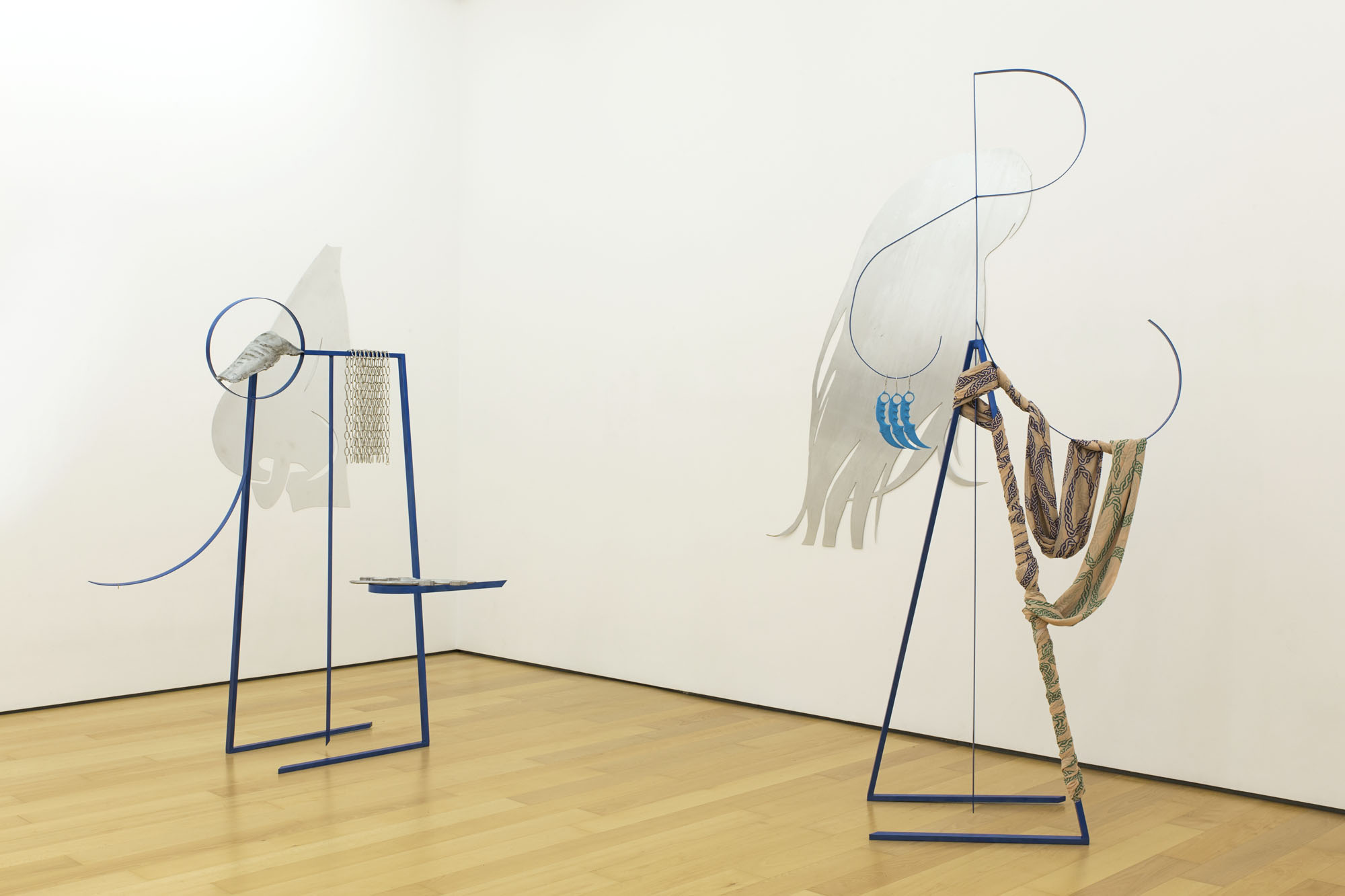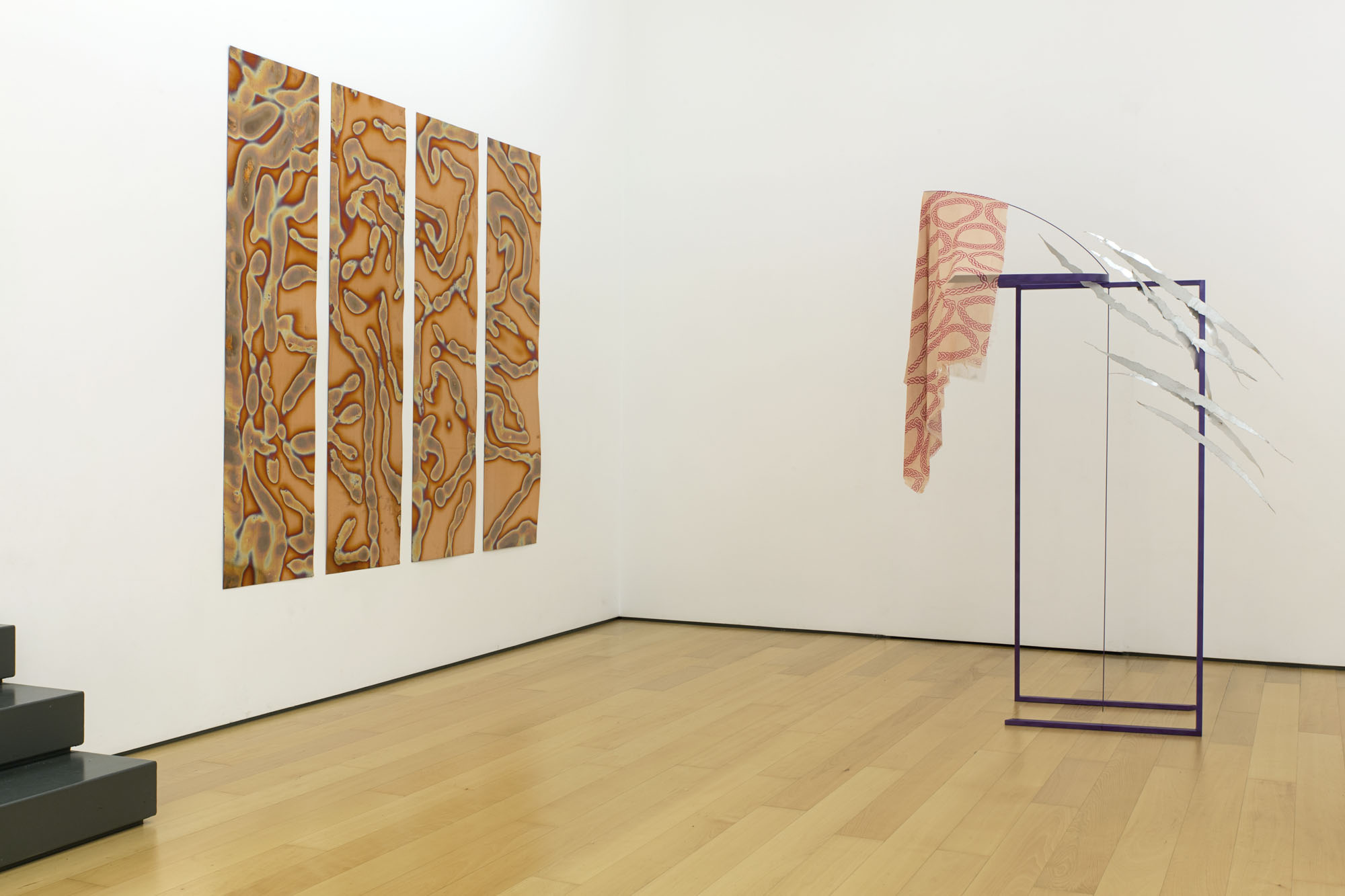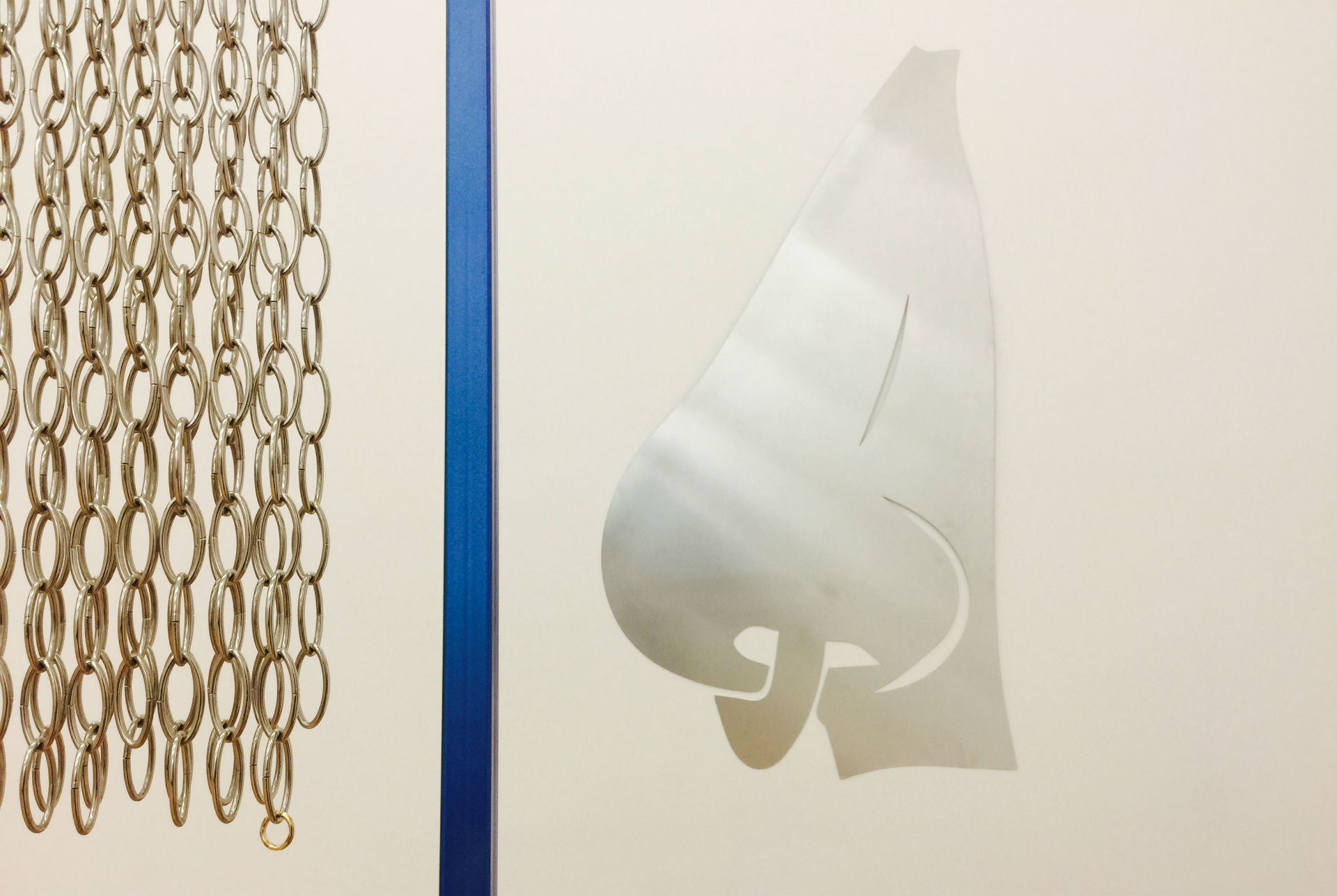Eleni Koroneou Gallery presents Cypriot artist Lito Kattou’s first solo show with the gallery titled Night Fight. Echoing Kattou’s sculptural explorations as seen in her graduation show at the Royal Academy of Art in London last summer, Night Fight constitutes a return for the artist in terms of subject matter, underlying concept, materials and techniques. Over the past few years, Kattou’s work has been developing as one overarching series of chapters that revolve around issues of fighting, flatness, the symbolism of the day cycle and the persistence of memory; therefore, the aforementioned “return” in the new exhibition is not meant as a back-pedaling or recycling of old material, but rather as a revisiting of these recurring themes in the artist’s work, this time treated with novel sensibility and presence, and a rather fragile (if not fleeting) take on the ways we become who we are.
Text by Kiriakos Spirou.
Cover photo by the author for und. Athens. Installation views courtesy of the gallery.

In the exhibition, five sculptures stand in the space, each a metal construction over two meters high carrying other elements such as custom-printed fabrics, handmade earrings, chains, small plastic daggers, cast objects and metal cut-outs. These are the five Warriors mentioned in the exhibition text, who say the motto on the gallery wall: “Let us remain in the past, let us forget who we are”. Although none of the sculptures is immediately seen as human-like, we have a feeling that each has a character, that they correspond to persons. This mainly has to do with the way the metal structures convey emotional and psychological tension, through their long curves, extended lines that hover in space and straight spikes that reach aggressively towards the floor but never make contact.
The fabric used for the sculptures — printed with a custom pattern inspired by the decoration of a Roman mosaic Kattou has seen in her home country of Cyprus — has been tied on or thrown over the metal structures, reminding either of a warrior’s headscarf, a cloak, or even a torn national flag or some other similar banner. It seems that Kattou’s five warriors are not fighting between themselves, but that they are all part of the same tribe; we are watching them walking through the night to reach their destination. Whether they are headed to battle or returning home after blood was shed is not easy to tell. What we do know is that they are on a journey, since the large copper work on the wall (Slice of Ground I, II, III, IV, 2017) is seen by the artist as a gateway of sorts.
The mix of cultural references in the individual components attached to each “warrior” (handmade earrings that look like ninja weapons, the Roman mosaic pattern, an ancient fragment of a painted ceramic vessel, daggers, iridescent seashells, nose rings etc) seem to relate the way identities are constructed — namely as elements attached to the body that alter it, some permanently, others less so. Compared to Kattou’s previous solo gallery show, we notice that in Night Fight, flatness has become three-dimensional (a concept also explored in a VR work she presented last year at Point Centre of Contemporary Art in Cyprus), as a layer that envelops the solid metal figure of each warrior. As facial features are scattered across the room, we understand these characters as multiplicities, as people that reappear in different times and places but resemble each other. Maybe this is what an encounter with heritage and history looks like, and the self-recognition we experience when we find a forgotten family heirloom in an old box. In the following interview, Lito Kattou explains more about her new exhibition and the ideas underlying each of the works.
Could you please tell us a bit about the exhibition title, and the story behind it.
Night Fight intents to capture a landscape or a psychological state were an incident hovering between pause, waiting and action will elaborate or has just elaborated, engaging with acts of attack and defense. During the night, premises are fluid, bodies and scars are vulnerable, vision is limited. The atmosphere of the landscape is gloomy and irritated.
What are your "warriors" fighting for, or against?
Battle and fighting in my practice are perceived as transformative conditions of becoming. Warriors in this case are either engaged into physical frictions or non-physical ones which contain different types and understandings of violence. There is a desire to conquer a new ground, to travel, to wander, to find themselves into non-specified and unclear terrains in time. They are equipped for that and each one of them carries its own scars, body marks, virtues, skills and object to go all the way. To continue the never ending wandering either as allies or as individuals.
Your work seems to be unfolding as one continuous narrative set in chapters. Is that intentional, and if so how do you keep the story going?
There is an ongoing relationship between writing and production, a back and forth. Sometimes the writing part related to a volume of works remains silent, at the margin, but already being submerged into different aspects of the works. In other occasions it gets a more present role in the installations. The encounter with the materiality and forms that are developed produce then their own different narratives and vice versa. All this that unfolds is a construction and discovery of an environment in a non-linear time sequence.

We can see some cultural references in the Night Fight show, like street art (Demand I and II), ancient art (Warrior II) and Celtic art (Warrior I). What is the common thread that connects all these references, if any?
The references in my work are some times specific and some times more abstract and generic, as in the case of the graffiti fonts in which I felt the declaration of the Warriors should be stated. There is a construction of a potential space-time where all these are settled on the same plane without applying a hierarchical evaluation of what should come first and front. What interests me are traces that could be found transformed or differently articulated in varied geographical and cultural contents. As for example what you refer as the Celtic reference of the circular forms embedded on Warrior I. Similar forms are found in different versions encircling scenes in Roman mosaics in Cyprus, my birthplace. Warriors are perceived as subjects in a constant wandering and transcendence, carrying forward cultural signs and forms through their dislocation.
How does your practice relate to pop culture, and particularly internet aesthetics and trends?
I have been thinking a lot on how flatness could be converted into volume and the other way round. I understand this has been created through my relationship with monitors, (laptops, tablets, smartphones, billboards, signs) the premises I create with them, the way I filter the perception of the outside world, the proximity I have with different types of violence through them, for instance. A spectatorship and an activity at the same time always connected to the need of thinking time and space as transformable constitutions. There is no prioritization in the way references have an impact to my practice. I guess a big part of it develops subconsciously and then the challenge is to process all the information gained. Probably this is a common challenge for every practitioner and creative subject who lives and works with the tools of today.
Do you believe there is a need for Western society to document itself? How is that affecting the way we understand history and culture?
History and documentation is an institution of Western culture. We are meant not to forget facts, not to forget incidents, even if we do not experience them in first hand. This has a specific impact on how culture in the West has been developed and probably there relate a lot of its suffering. I am not sure if a collective amnesia on the subconscious of societies could be achieved but there could be a hope for the potentialities of the yet non perceivable to be awaited.

The exhibition Lito Kattou: Night Fight continues at Eleni Koroneou Gallery (Dimofontos 30, 11851 Athens, tel. +30 21 0341 1748) through 3 February 2018. Eleni Koroneou Gallery is listed in the und. Athens directory at no. 83.
Subscribe to our newsletter for regular updates and fresh content from the und. Athens team.
